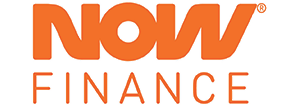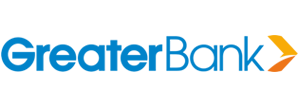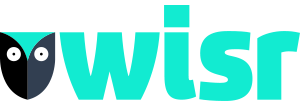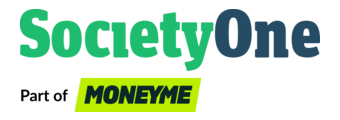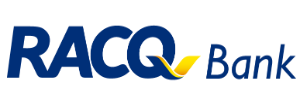Lowest Personal Loan Rates - October
Many of the best personal loan rates are available for those making green purchases - whether that's a green vehicle, or green additions to the home such as solar panels, double glazed windows, or other eco-friendly features.
Below are the lowest personal loan rates in InfoChoice's product database for a 5-year term. This may differ to the comparison table above.
|
Brand |
Product |
Advertised % Rate Per Annum |
Comp. % Rate Per Annum |
|---|---|---|---|
|
Bendigo Bank |
Green Secured Personal Loan |
5.49% |
5.84% |
|
Harmoney |
Unsecured (excellent credit) |
5.76% |
6.55% |
|
NOW Finance |
No Fee Personal Loan | 5.95% |
5.95% |
|
Bank of Melbourne/BankSA |
Secured Personal Loan |
6.49% |
7.69% |
|
Community First Bank |
Green Loan |
6.29% |
7.34% |
Correct as of 1 October 2025.
How to compare personal loans
Each lender will have their own offers and rates. It’s always best to compare as many different types of loans as possible before deciding on which one will work best for you.
For many, the first step in comparing personal loans is to look at the interest rates. Keep in mind, just because a lender offers a lower interest rate, doesn’t mean that this is the best option for you.
You may want to look into each lender’s fees and what features they offer. You may find that the loan with the lower interest rate, doesn’t offer a redraw facility that you may want down the track.
Here is a list of loan types and features to consider. This may help you in deciding what is relevant to your situation:
- Should you get a variable or fixed interest rate?
- Should you get a secured or unsecured personal loan?
- How long do you want the loan to go for?
- Is it likely you will make additional repayments?
- Will you need a redraw facility?
There are a few extra things you should take into consideration when comparing personal loans such as:
1. Does the loan have a competitive interest rate?
You should always compare the interest rates of a similar product to ensure you get the best deal. But before you do this, you’ll first need to decide whether you’re after a fixed rate personal loan or a variable rate personal loan.
While variable interest rates can be raised or lowered by the lender at any time, a fixed interest rate is exactly that: fixed. While fixing your interest rate means your rate won’t go up, you can potentially miss out on a lower interest rate if your lender decided to reduce rates.
Don’t forget to also look at the comparison rate as this takes into account the true cost of the loan including the interest rate and the main fees payable.
2. What fees and charges will there be?
Always take into consideration the fees you may be charged for a personal loan. Ask each lender whether they charge any of the following fees, and if so, how much:
- Upfront costs e.g. establishment fee
- Ongoing fees e.g. annual fee
- Late payment fees
- Extra repayment fees
If your loan has features such as redraw, you may also be charged fees for this facility depending on the lender.
Usually an indication of a high-fee product is the comparison rate; if it’s substantially higher than the advertised rate, this is usually a sign of high fees.
3. Is the loan flexible?
Are you able to make extra repayments at no extra charge? Can you increase the amount of times you make deposits? Will there be a penalty if you pay off the loan earlier? Is there a redraw facility if you do make early repayments? These may all be feature you will want from your personal loan so look for a loan that suits your particular needs.
4. What loan term do I want?
There are two things to consider when you’re deciding on a loan term. The longer the term, the lower the repayments. However, this means you’ll likely pay more in interest over the life of the loan. The shorter the term, the more expensive your repayments will be, but you’ll likely pay your loan of quicker and spend less on interest.
What are the different types of personal loans?
It is always worthwhile to research what type of loan suits you best, as there are many different types of personal loans available.
1. Fixed interest rates loans
These loans come with a fixed interest rate which means your interest repayments will always stay the same and won’t move in sync with Australia’s cash rate, which is controlled by the Reserve Bank (RBA). So not only will your interest repayments not rise, in turn they will also not drop. These loans usually have a slightly higher interest rate than variable loans, but these types of loans are very helpful if you’re trying to stick to a strict budget.
2. Variable interest rate loans
If you have a variable interest rate, that means your monthly repayments may fluctuate with the standard cash rate. Your rate could go up if interest rates spike, but it could also go down if they drop. A variable interest rate loan also tends to have a lot more flexibility compared to a fixed rate loan i.e. the ability to make extra repayments, refinance, and pay it off early.
3. Secured personal loan
A secured personal loan is where you use an asset (such as a car) to be used by the lender as security against the loan. Term deposits are also generally the second-most-popular asset with which to secure the personal loan.
If you are unable to repay your loan, the lender can sell or repossess the asset to recover the loan amount owing. Keep in mind that the value of the asset must be equal to or greater than the value of the loan.
Generally, secured personal loans can be used to purchase almost anything including a car, holiday, engagement ring, home renovations, and the like.
Due to the security of the asset, secured personal loans often have lower interest rates than unsecured personal loans. You may also be able to borrow a larger amount. However, this may also come down to your particular credit score – borrowers with bad credit may have a higher interest rate than those with a good credit score.
4. Unsecured personal loan
If you don’t have an asset to offer as security you could apply for an unsecured loan. Most lenders consider unsecured loans to be riskier than secured personal loans as they don’t have an asset to fall back on if you’re unable to meet repayments. Therefore, they usually charge higher interest rates.
In the case that you don’t make your repayments, the lender may take you to court to recoup the money you borrowed.
With unsecured personal loans, you can borrow money for a holiday, an unexpected bill, home renovations, a car, and so on.
5. Line of credit
A line of credit is a personal loan where you’re able to access a pre-determined amount of funds at your own discretion and repay the borrowed funds via monthly repayments, typically charged at a variable interest rate.
It is similar to a credit card in that you only pay interest on the amount that you use. For example, if you had a balance of $25,000 and you withdrew $10,000, you’d only be charged interest on the $10,000.
6. Debt consolidation
A personal loan could also be of use to you if you need to consolidate your debt. If you have a credit card or two that are maxed out and you can’t seem to pay them off, or you have some smaller personal loans and debts that you would like to get rid of, combining them into a single personal loan makes a daunting task more achievable.
Putting all you debts into one loan also makes managing your finances a lot simpler. Not only will all your debt be subject to the same interest rate, but you will have it all in one place making budgeting more logical.
What are the advantages and disadvantages of a personal loan?
Personal loans are great if you need a quick hit of cash for a large expense. However, like any product there are advantages and disadvantages in which you should be aware.
Advantages
- You can use a personal loan for any purchase: Unlike a mortgage or car loan that is specifically for homes or cars, a personal loan can be used for anything. You can buy a new computer or pay for a holiday. The list is endless.
- You don’t always need security: As long as you meet the lender’s borrowing criteria, you may be able to get a loan without putting up any security i.e. take out an unsecured loan.
- You can borrow up to $100,000: Most personal loans start at $1,000 and go as high as $100,000. Make sure to only borrow what you can afford to pay back.
- Rates Are Reasonable: The rates for personal loans can be lower than those of credit cards. A lot of people open a personal loan to consolidate their credit card debt so as to save money on the interest.
Disadvantages
- Interest rates may be higher: Depending on your credit score, you may find that your interest rate might be higher than others. If your credit score is good you are more likely to get a better rate.
- You will always pay interest: Unlike credit cards, where if you pay your balance in full each month you can avoid paying interest, a personal loan requires you to pay interest on each monthly repayment.
What is required of you when you apply for a personal loan?
When applying for a personal loan, most lenders will require the following items or information from you:
- That you are 18 years or older
- That you are an Australian citizen, permanent resident or have a valid visa
- That you are employed and receiving regular income
- That you earn a minimum income
- That you have a good credit rating
You will also need to provide:
- Proof of identity such as driver’s licence or passport
- Proof of employment and income such as payslips and tax returns
- Details of any other debts or financial commitments
- Details of additional assets if you are applying for a secured loan
Financial Dictionary
| Annual Percentage Rate | Fees and interest are expressed as a percentage to determine the total charge for the loan. Knowing this allows you to compare products with different lenders. |
|---|---|
| Application Fee | The cost of arranging and processing a loan application. |
| Borrower | The person who takes out a loan. |
| Comparison Rate | The interest rate, payments and upfront fees and charges (but not all), that make up the total annual cost of the loan. |
| Credit Rating | A borrowers credit-worthiness based on credit history - determined by lenders. |
| Credit Report | A report that determines your credit worthiness based on your credit and repayment history. |
| Creditworthiness | How a lender values your ability to repay a loan, usually based on your credit score. |
| Consolidation Loan | A debt consolidation loan helps you consolidate all your debts including credit cards and loans into one place. |
| Default | Failure to meet payment obligations set by a lender. |
| Extra Repayments | Some lenders allow borrowers to make extra repayments into their personal loans. While this helps draw down the loan quicker, it can incur charges. |
| Fixed Rate | A locked in interest rate for a specific period of time. |
| Maximum Loan Amount | The maximum amount a borrower can borrow. |
| Minimum Loan Amount: | The minimum amount required to be borrowed by the lender. |
| Personal Loan | A personal loan is a secured or unsecured loan offered by a bank or financial institution that allows you to borrow a lump sum of money that you repay in regular monthly instalments, with interest, over the life of the loan. |
| Principal | A loan balance which does not take into account interest. |
| Redraw | A feature of a personal loan, whereby a borrower can withdraw funds already paid into the loan if those funds are in the form of extra repayments. |
| Secured Loan | A loan whereby a borrower secures the funds borrowed with an asset, so the bank has insurance in case the loan is defaulted. |
| Unsecured Loan | No assets are required for security against the loan, leaving the lender more exposed to risk. |
| Variable Rate | An interest rate that fluctuates, usually dependent on the cash rate set by the RBA. |


